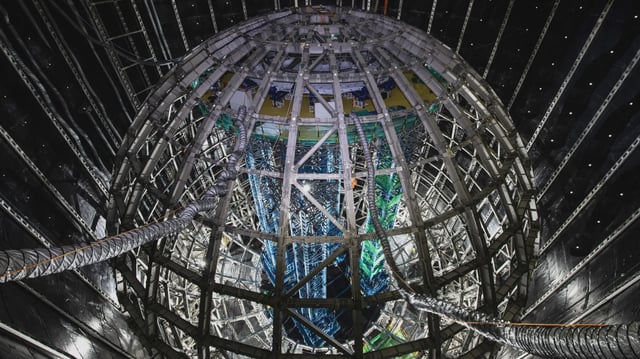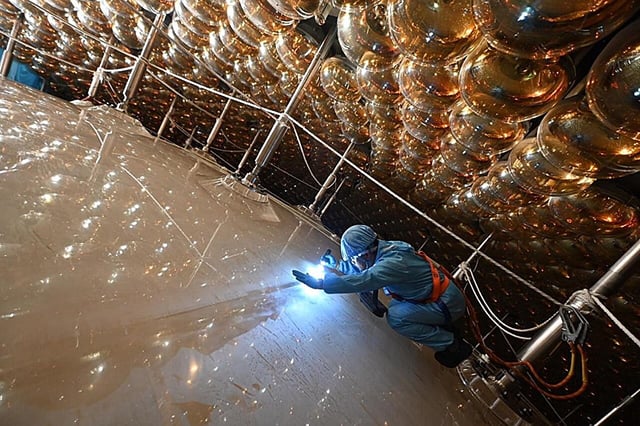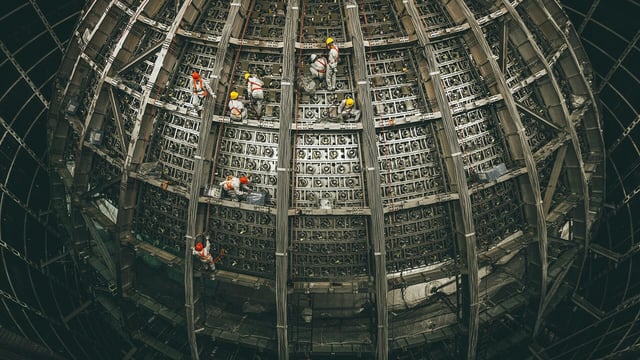Overview
- JUNO completed filling its 20,000‑ton central detector and officially began data taking on August 26 after more than a decade of development.
- Initial trial operations met or exceeded design targets, with reactor antineutrino events already observed during commissioning.
- The heart of the experiment is a 35.4‑meter acrylic sphere housed in a deep water pool about 700 meters underground and instrumented with 20,000 20‑inch and 25,600 3‑inch photomultiplier tubes.
- The detector measures antineutrinos from the Taishan and Yangjiang nuclear plants 53 kilometers away to determine the neutrino mass ordering and refine key oscillation parameters.
- Led by China’s Institute of High Energy Physics, the 700‑plus‑member international collaboration plans up to 30 years of operations with a potential upgrade toward a leading neutrinoless double‑beta decay search.



